Moreton Bay Research Station highlights
Wen Sung Chung QBI and the University of Tokyo
In September, MBRS hosted scientists from the University of Tokyo who were studying tiny, but very striking, pygmy squid (Idiosepius sp.) Yoko Iwara, Mizuki and Noriyoshi compared sexual selection and courtship display between the pygmy squid of Moreton Bay and those found in Japan. Apparently, it is much easier to find these miniature one centimetre-long squid in Australia, although it was noted that after the 2011 flood event they almost disappeared from the Bay. Thankfully however, their population numbers returned to sustainable levels just two to three years later. MBRS wishes them well with their research and hopes to see them back next year.
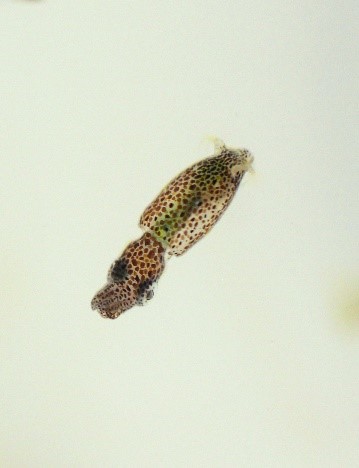
Tim Boudreau QBI
Tim from Prof. Justin Marshall’s lab (QBI) spent a lot of time in the laboratories at MBRS studying brain cell changes following behaviour/learning experiments in octopus. He even moved to the Island for several months. Tim tried several species such as Octopus berrima from interstate (biosecurity approvals and processes in place), and the venomous Hapalochlaena fasciata (aka blue-lined octopus) collected from in front of MBRS (biosafety approvals and processes in place), before finally obtaining sufficient Octopus cyanea on scuba off Point Lookout to complete the study. After acclimatising and training the octopus over a period of weeks in the MBRS aquaria, their brains were collected for MRI scans and RNA was extracted to study the genes associated with the stimulus process.
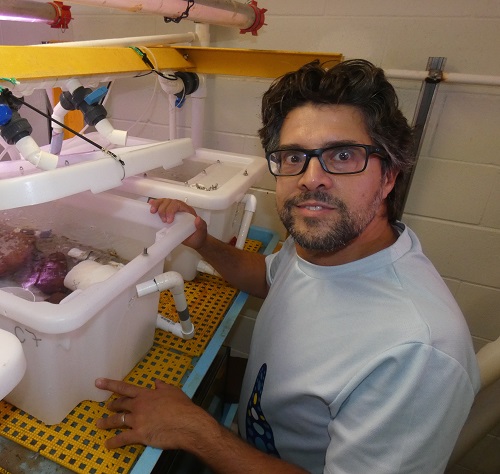
Chris Lawson (2018 MBRS scholarship holder)
Chris Lawson completed a project exploring the energetics of reef manta rays, as part of his PhD with Prof. Mike Bennett and Dr Christine Dudgeon. He used respirometry, bomb calorimetry and bioenergetics modelling to study how these animals manage their energy requirements and influence ecosystems. His work at MBRS examined eagle ray behaviour in the aquaria to assess their metabolic rates associated with feeding, swimming, and growth. The animals were sourced locally using MBRS vessels. The results were used as a model for larger manta rays. We thank Chris for giving a great talk and presenting his results to MBRS and the local community during the 2019 MBRS Open Day!
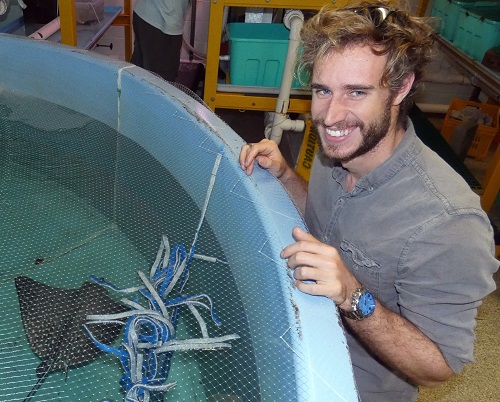
Patrick Moss (SEES)
Assoc. Prof. Patrick Moss’s group (SEES) is researching wire rush within peatlands in SE Queensland. During June he spent time at MBRS studying wire rush, which is an important peat-forming plant in the associated wetlands. His group obtained an historical record of the Jumping Grass Marsh – located in the middle of Dunwich - by applying pollen, micro-charcoal, and radiocarbon analyses to peat cores extracted from this wetland. The peat provided a record as far back as 27,000 years ago, which shows that it is so far a unique marsh in SE Queensland sand masses. This marsh burned only a few months ago, and insights from the peat record into the fire management of the area show that local burning also occurred in the last glacial to de-glacial period. Despite its long history, the marsh is now under threat from urbanisation and changed fire regimes that aid the replacement of wire rush by paperbark swamps.
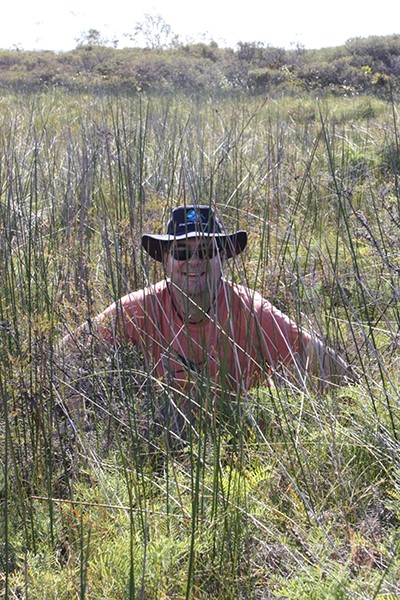
Clarisse Louvard (2018-2019 MBRS scholarship holder)
Assoc. Prof. Tom Cribb’s lab is actively studying trematodes in fish. These parasites require other particular host(s) to survive. However, many of the secondary hosts required for completion of the parasitic life cycle are not known. Clarisse Louvard is searching marine plankton for potential secondary hosts, such as pelagic marine molluscs. She has visited MBRS regularly over the year to sample plankton from the ocean side of Stradbroke Island in the MBRS boat “Glaucus”. Samples studied in the MBRS laboratories have provided evidence that Glaucus atlanticus (from which the MBRS boat gets its name) is a crucial intermediate host for some of these trematodes. Glaucus are planktonic predators that feed on bluebottles such as Physalia spp. Velella spp., and Porpita spp., incorporating their blue stinging cells into their bodies for their own defence. We thank Clarisse for helping out with the collection of the touch tank animals and going above and beyond in the support of MBRS Open Day.
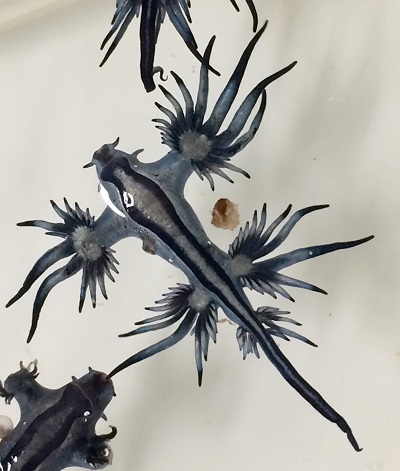
Cetacean Ecology and Acoustics Laboratory (CEAL)
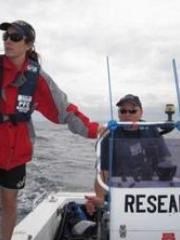 Rebecca Dunlop is co-director of the CEAL group, now working out of the MBRS research offices. She has begun to set up an endocrinology lab to process and assay testosterone samples from whales using ELISA (enzyme-linked immunosorbent assay) analysis.
Rebecca Dunlop is co-director of the CEAL group, now working out of the MBRS research offices. She has begun to set up an endocrinology lab to process and assay testosterone samples from whales using ELISA (enzyme-linked immunosorbent assay) analysis.
CEAL also conducts research on the 600 or so Indo-Pacific bottlenose dolphins that inhabit Moreton Bay. Research mainly focuses on the acoustic behaviour of the dolphins. The dolphins use 'signature whistles' which are unique identifying communication signals, to help maintain social structure. CEAL’s research is aiming to determine whether these signature whistles contain information on the individual's behavioural state (e.g. aggressive, affiliative, appeasing) as well as whether the social structure of the population influences whistle use and/or structure. The habitat of the bottlenose dolphins in Moreton Bay overlaps heavily with human activity within the bay. The information CEAL collects will help improve baseline knowledge of the dolphins, which in turn may help inform future management decisions regarding their protection within the bay.
